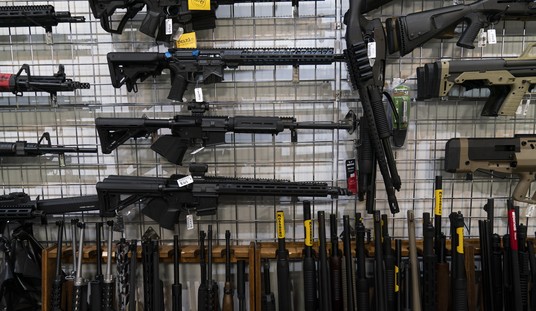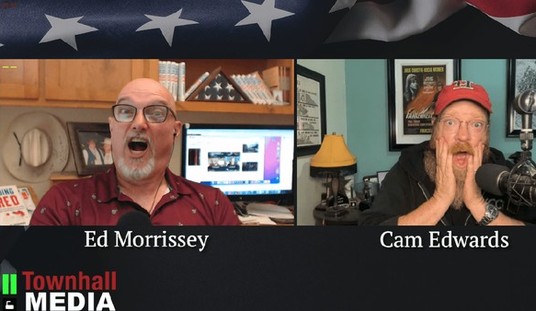The progressives are scrambling to try and take control of the rhetoric. The facts are though, they’re out of their wheelhouse, and will pull at any word, sentence, or even syllable they can to try and spin things their way. We’re talking about the upcoming arguments in NYSRPA, which are scheduled on November 3rd. This case involving the matter of carry and firearm possession outside the home has the anti-freedom caucus going apoplectic.
This latest spin from CNN came across my desk from content creator Braden Langley in one of his recent videos. HT to Braden, thanks for the content idea. The article is titled “Now that guns can kill hundreds in minutes, Supreme Court should rethink the rights question”.
If the title of the article does not make you cringe, perhaps more of the content will. From the CNN piece:
This fall, the US Supreme Court will decide New York State Rifle and Pistol Association v. Kevin Bruen, a case that may result in vastly expanded rights to carry firearms in public. In doing so, the Court will need to grapple with a key question that, until now, has been left unanswered in the Second Amendment debate: Are there any limits to the type of firearm that can be carried outside of the home?
The answer to that question is succinctly put, “no”. And the case aims to restore rights, not expand them.
In the pivotal 2008 case District of Columbia v. Heller — which recognized the Second Amendment as an individual right to own a gun at home for self-defense — the Court admitted the existence of different categories of weapons, while conceding that “dangerous or unusual weapons” could be regulated. But it did not define what constitutes a “dangerous or unusual” weapon, nor recognize that there are different degrees of danger within the category of firearms.
This is a very interesting thing that’s being pointed out. Leaning on the “dangerous or unusual weapons” argument to try and set the stage for future legislative bans on firearms is crafty. Given the context of the NYSRPA case, we can see this is just grasping at straws. The question presented to the court, specifically reworded by the court is as follows:
Whether the State’s denial of petitioners’ applications for concealed-carry licenses for self-defense violated the Second Amendment.
The controversy is over the states denial of granting permits to otherwise eligible persons. Not to granting citizens the right to carry something that would be considered “dangerous or unusual”. In general terms, we’re discussing concealing or carrying a handgun on one’s person for self-defense, firearms already deemed to be in common use and constitutionally protected. Sure, a broad opinion might extend this right to being beyond the carriage of handguns, but just re-read the question the court is going to answer. Given that, the further claims in this article are just fantastical.
To date, the legal debate over the Second Amendment has largely assumed that gun technology unfolds over time according to a single, linear logic, from the colonial flintlock musket to the modern AR-15. Yet the lethality of modern firearms has grown exponentially since the mid-1800s — and this must be taken into account when considering the constitutionality of firearms regulation in a post-Heller world.
…
In the 20th century, bullets became smaller and lighter, enabling soldiers to carry more, while design changes increased the damage they caused upon entering the human body. Today, the highly popular civilian AR-15 is a vastly different and substantially more lethal machine than the flintlock muskets that were in use when the Founders crafted the Second Amendment.
Looking close at this statement, what about the bullets? The claim that the bullets are lighter and that due to design changes they increase the damage they inflict does not really make sense. If anything, the modern cartridges being used, specifically by the military, are not more “lethal” than say a musket ball. To conflate the notion that because an AR variant can fire more rounds and the size/design of a bullet is smaller, does not equal more lethal. Again, what would you rather be hit with? A .223 bullet or a musket ball? The argument here is beyond silly and as seen, they’re playing word games. Word games which they fully admit they need to dominate in and control.
What is needed is a common vocabulary and a shared metric for quantifying the lethality of firearms in historical terms when approaching Second Amendment policy and doctrine. Without it, the Supreme Court will not have a clear-eyed assessment of this upcoming case and the repercussions it will have on people’s lives.
Fortunately, a metric like this already exists. More than 50 years ago, the US Army commissioned a study of weapon effectiveness that sought to quantify the lethality of firearms throughout history. The designer of the study, Trevor Dupuy, was a decorated US Army colonel, a noted military historian and a founding faculty member of Harvard University’s Defense Studies Program.
In 1964, Dupuy developed the “Theoretical Lethality Index” (TLI), which calculated the lethal capacity of weapons across time. The TLI table showed how many persons a soldier with a weapon could theoretically kill in one hour.
The quipping of such “data” or information in a carry case is truly a non-sequitur. This shows the anti-freedom caucus is really panicking at the notion the peasants will have their rights restored, rather than as they say have a “result in vastly expanded rights”.
Capping off the subject and narrative shift manifesto, they quote McDonald:
As Justice John Paul Stephens wrote in his dissenting opinion in the 2010 McDonald v. City of Chicago case, liberty is “on both sides of the equation” when it comes to deliberating on guns in society. “Guns may be useful for self-defense, as well as for hunting and sport, but they also have a unique potential to facilitate death and destruction and thereby to destabilize ordered liberty,” Stephens wrote. “Your interest in keeping and bearing a certain firearm may diminish my interest in being and feeling safe from armed violence.”
Fortunately for the Union, that was a dissenting opinion. Given the side of history your view is on CNN, with both Heller and McDonald putting to bed the fact we have these rights, and conceivably Caetano putting a nail in the “dangerous or unusual weapons” argument, your feelings don’t dictate our rights. How you feel and what you think is of very little consequence. After all, it’s the Bill of Rights, not the Bill of Feels.
Drop a dime and tell us more about your feelings should the rights of New Yorkers, and by extension the rest of the country, be fully restored. I can’t wait to read and hear your thoughts…for entertainment purposes.
Should you be interested in checking out Braden’s video on the subject, click HERE or catch it in the embed below:









Join the conversation as a VIP Member